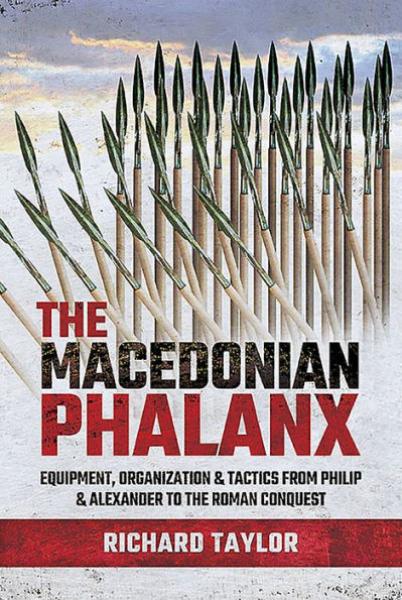Description
An overview on one of the most successful infantry formations used by Alexander the Great and his successors to dominate the ancient world.
The Macedonian pike phalanx dominated the battlefields of Greece and the Near and Middle East for over two centuries. It was one of the most successful infantry formations of the ancient world, only rivaled by the manipular formation of the Roman legions. The phalanx was a key factor in the battlefield success of Alexander the Great and after his death dominated the armies of his Successors (the Diadochoi), who ruled from Greece and Egypt to the borders of India.
Richard Taylor gives an overview of the phalanx's development, organization, equipment and training. He analyses the reasons for its success, with an emphasis on case studies of the many battles in which it was used, from Philip II's reign to the Mithridatic Wars. He discusses whether the famous defeats by the Romans necessarily mean it was inherently inferior to the manipular legion tactics, and considers what other factors were in play. The clear, accessible and well-researched text is supported by diagrams and battle maps, making this an outstanding study of this mighty formation.
The Macedonian pike phalanx dominated the battlefields of Greece and the Near and Middle East for over two centuries. It was one of the most successful infantry formations of the ancient world, only rivaled by the manipular formation of the Roman legions.
Colonel Richard Taylor was an original member of the first modern ranger battalion. He also commanded an infantry training battalion, served with the 82nd Airborne Division during Operation Urgent Fury in Grenada, directed an academic department at the Army's Staff College, provided military advice to NATO's arms control negotiations during the break up of the Warsaw pact, and was the Chief of Military Assistance in the Philippines during the closing of bases there. Taylor earned two Masters degrees from Boston University. He lives in the Atlanta area with his wife Sandy.
The Macedonian pike phalanx dominated the battlefields of Greece and the Near and Middle East for over two centuries. It was one of the most successful infantry formations of the ancient world, only rivaled by the manipular formation of the Roman legions. The phalanx was a key factor in the battlefield success of Alexander the Great and after his death dominated the armies of his Successors (the Diadochoi), who ruled from Greece and Egypt to the borders of India.
Richard Taylor gives an overview of the phalanx's development, organization, equipment and training. He analyses the reasons for its success, with an emphasis on case studies of the many battles in which it was used, from Philip II's reign to the Mithridatic Wars. He discusses whether the famous defeats by the Romans necessarily mean it was inherently inferior to the manipular legion tactics, and considers what other factors were in play. The clear, accessible and well-researched text is supported by diagrams and battle maps, making this an outstanding study of this mighty formation.
The Macedonian pike phalanx dominated the battlefields of Greece and the Near and Middle East for over two centuries. It was one of the most successful infantry formations of the ancient world, only rivaled by the manipular formation of the Roman legions.
Colonel Richard Taylor was an original member of the first modern ranger battalion. He also commanded an infantry training battalion, served with the 82nd Airborne Division during Operation Urgent Fury in Grenada, directed an academic department at the Army's Staff College, provided military advice to NATO's arms control negotiations during the break up of the Warsaw pact, and was the Chief of Military Assistance in the Philippines during the closing of bases there. Taylor earned two Masters degrees from Boston University. He lives in the Atlanta area with his wife Sandy.
Last updated on
Product Details
- Pen & Sword Books Brand
- Dec 2, 2020 Pub Date:
- 1526748150 ISBN-10:
- 9781526748157 ISBN-13:
- 482 Pages
- 9.5 in * 6.3 in * 1.6 in Dimensions:
- 2 lb Weight:




